Metal That Are Easy to Drill Through
1 / 13
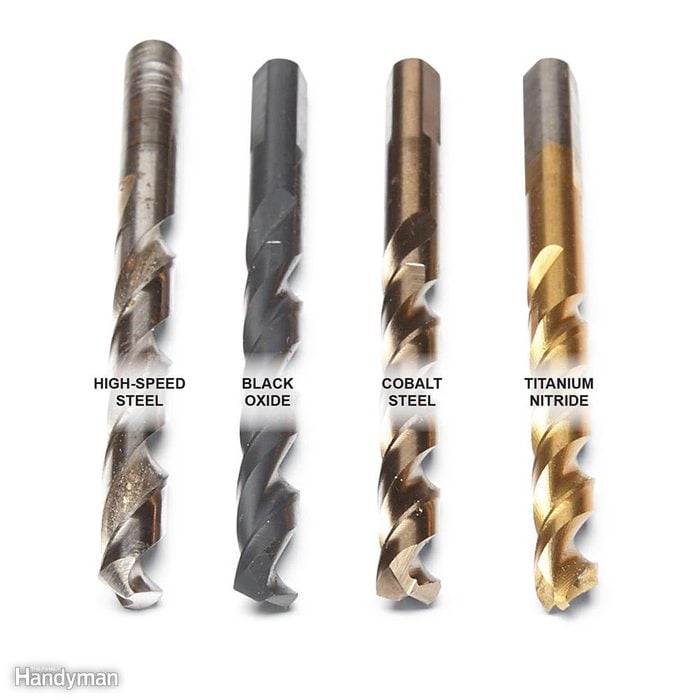
No Fancy Drill Bits for Metal Required
Almost any general-purpose twist bit will do a decent job of drilling holes in metal. In fact, most drill bits for metal are manufactured to drill through a variety of materials, including wood and plastic. The least expensive twist bits are made of high-speed steel (HSS), and these basic bits are just fine for most metal-drilling tasks. If you'll be drilling a lot of holes, or need to drill through hard, abrasive metals like stainless steel or cast iron, spend a couple bucks more for black oxide or a cobalt steel drill bit for metal. These bits will bore more holes before becoming dull. Some bits also have a special coating called titanium nitride (TiN), which manufacturers claim helps resist heat and friction better, making these bits last up to six times longer than standard high-speed steel bits.
2 / 13

Protect Your Eyes
It only takes one tiny metal fragment to cause a serious eye injury, so proper eye protection when drilling metal is an absolute must. For the best protection, choose safety glasses that wrap around the sides of your face.
3 / 13
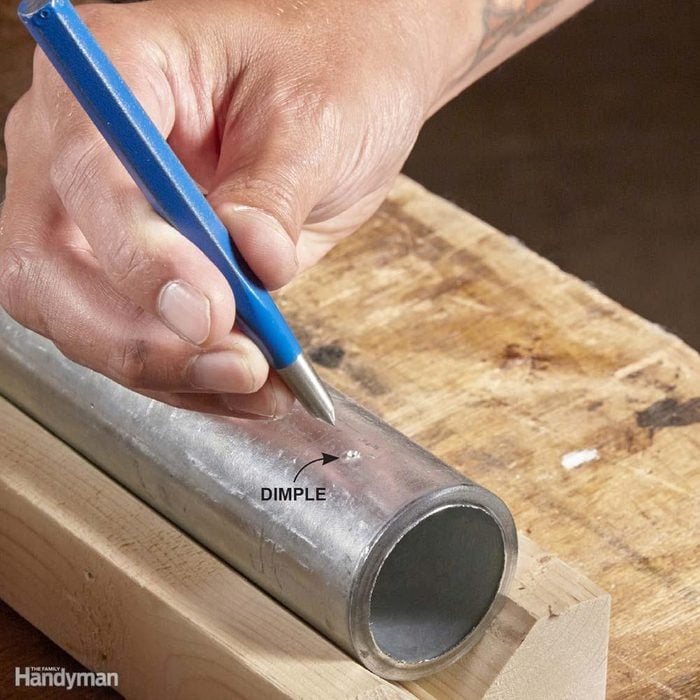
Make a Dimple
Drill bits have a tendency to wander when you first start drilling. To prevent this, measure and mark where you want the hole and then use a center punch and hammer to create a small dimple. This gives the tip of your drill bit a place to ride in as you begin to drill.
4 / 13
Plus, Here's How to How Drill a Hole in Tile
Mounting towel bars, shower doors and other bathroom accessories often require drilling holes in tile.
5 / 13
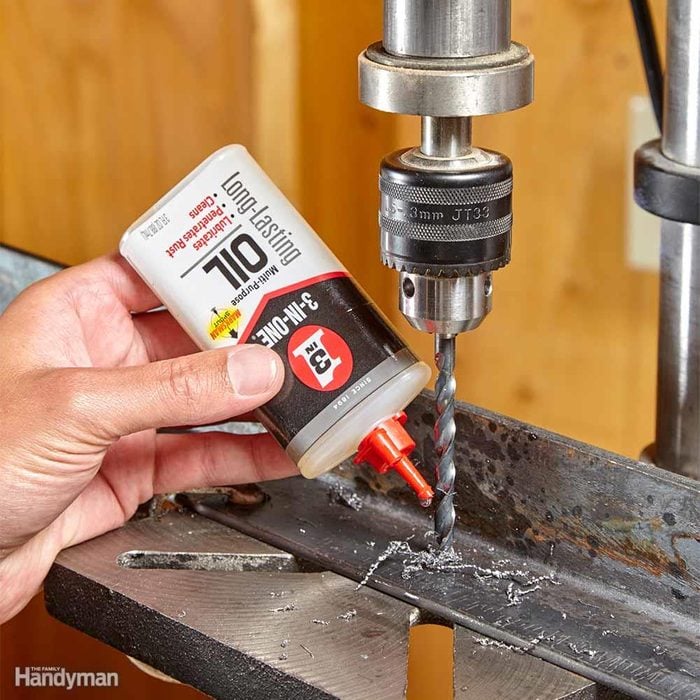
Lubricated Bits Last Longer
For drilling holes in steel that's 1/8 in. or thicker, use cutting fluid or a multipurpose oil like 3-IN-ONE. Lubricating the bit reduces friction and heat buildup, which makes drilling easier and your bits last longer. For easier-to-drill metals like aluminum, brass or cast iron, lubrication isn't usually necessary.
6 / 13
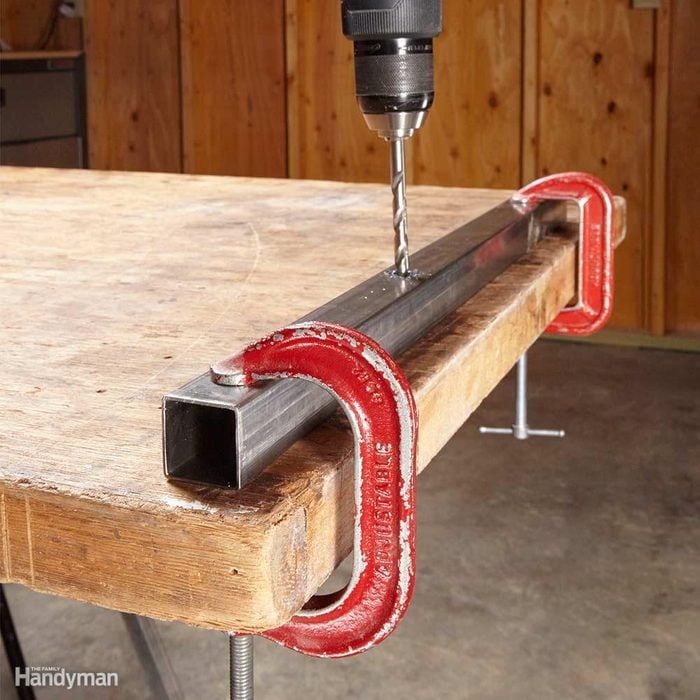
Clamps Prevent Stitches
Never hold a piece of metal in one hand while trying to drill through it with the other. The drill bit for metal could catch, instantly causing the workpiece to spin, strike and slash (sharp metal edges slice to the bone!). Always use a minimum of two clamps to securely hold down your workpiece.
7 / 13

Start with a Small Hole
Need a big hole? Start small! Most twist bits are available in sizes up to 1 in. in diameter, but you'll get the best results by starting with a 1/4-in. hole and drilling successively larger holes with your drill bit for metal until you reach the size you want.
8 / 13
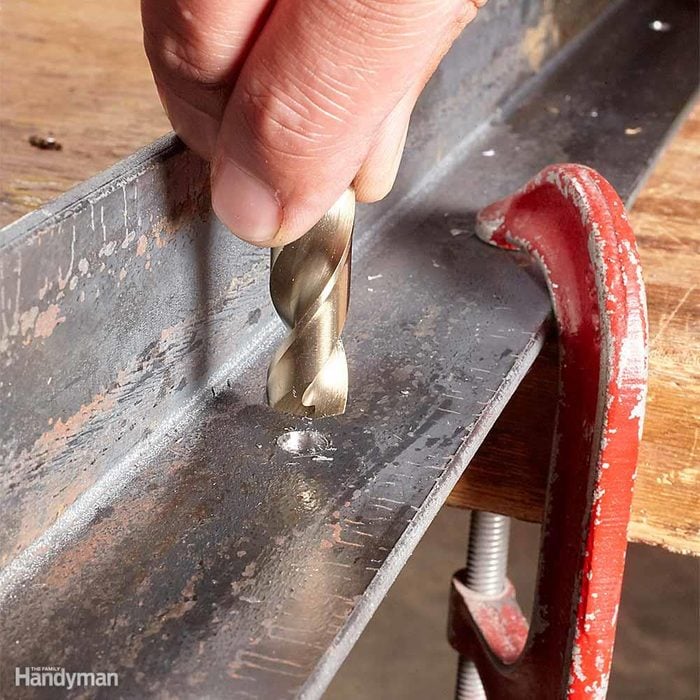
Deburr the Hole
After drilling a hole in metal, it's a good idea to remove any sharp edges or burrs left behind. You can buy fancy deburring tools to smooth sharp edges, but before spending money on one, try this trick: Take a twist bit slightly larger in diameter than the hole you just drilled, and gently hand-twist it over the top of the hole. This will smooth out the edge of the hole and grind away any burrs.
9 / 13
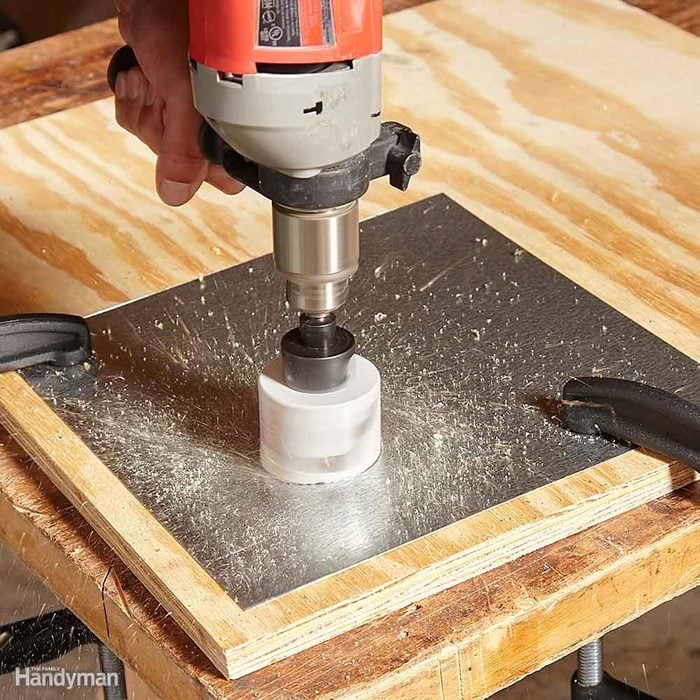
Hole Saws Cut Bigger Holes
For large holes, a hole saw gets the job done cleanly and quickly. Like twist bits, hole saws chuck right into your drill and will cut through thin-gauge sheet metals like aluminum and steel. Use a scrap of plywood as a backer for the hole saw's pilot bit and to protect your work surface.
10 / 13
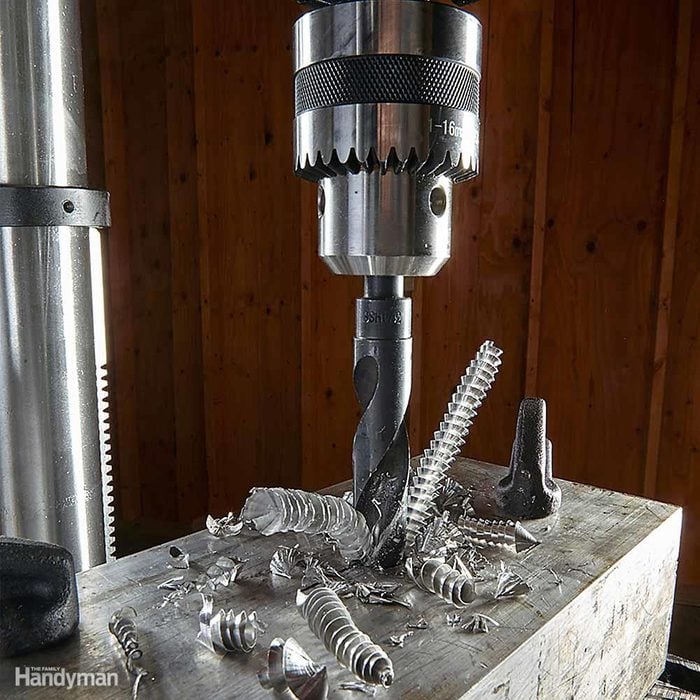
Drill at a Slow Speed
The faster a bit spins, the hotter it gets. And heat dulls bits quickly. In general, it's a good idea to drill through metal using as slow a speed as possible using a drill bit for metal. Hard metals like steel and larger drill bits require even slower speeds. With a small twist bit (1/16 in. to 3/16 in.), you can drill through most metals at 3,000 rpm. For larger twist bits (11/16 in. to 1 in.), 350 to 1,000 rpm is recommended.
11 / 13
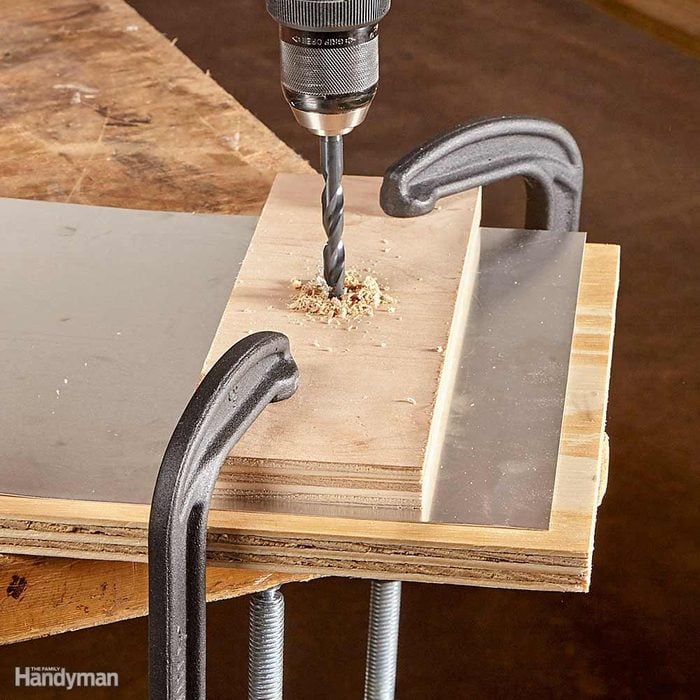
Make a Sandwich
For clean, precise holes in thin sheet metal, make a wood sandwich. Simply sandwich the sheet metal between two pieces of wood and clamp everything down on a table or workbench. The wooden 'bread' layers of the sandwich keep the sheet metal flat and prevent the drill bit from wandering as it bores through the sheet metal.
12 / 13
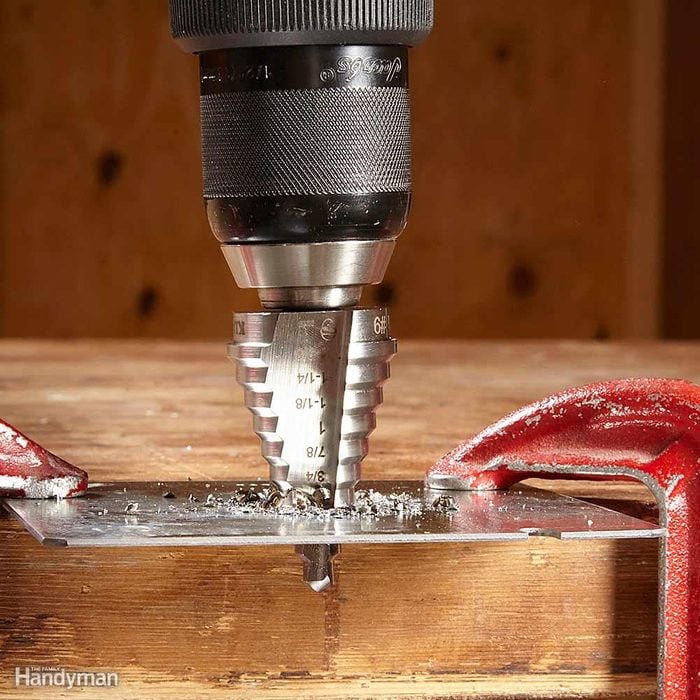
Try a Step Bit
Step drill bits are designed to drill holes in sheet metal and other thin materials. They're just the thing when you need a perfectly sized, clean hole in a steel junction box, electrical service panel or even a stainless steel sink. A step drill bit for metal allows you to drill holes in a variety of diameters, and some will drill through metal up to 3/8 in. thick. The downside? Step bits are more expensive than regular bits.
13 / 13
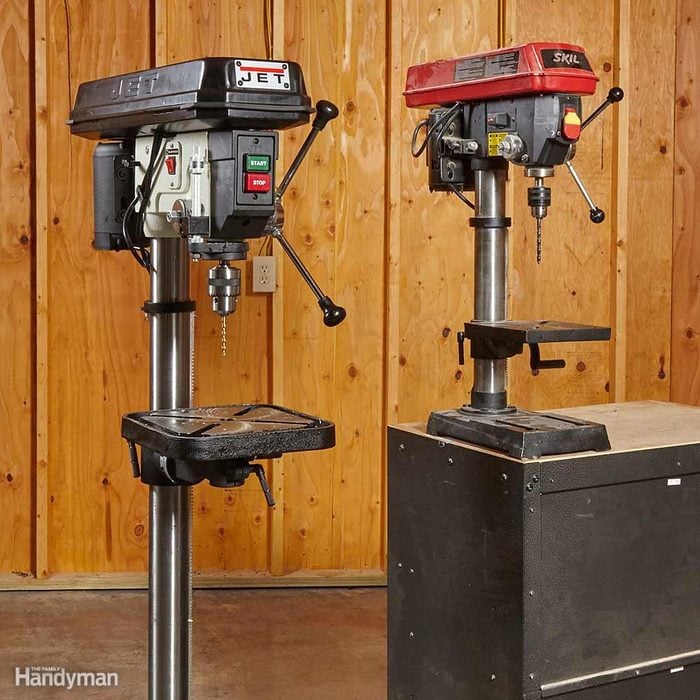
Step Up to a Drill Press
While it's fairly easy to drill most holes in metal using nothing more than a handheld drill, you'll almost always get greater accuracy and better results using a drill press. Most drill presses are actually built with metalworking in mind. Pulling down on the handle causes the bit to plunge straight down into a workpiece and make a very precise hole.
Drill presses also come with beefy cast-iron tables with tilt and height adjustments, and allow a variety of clamping options. Speed changes are as easy as opening the lid and moving a rubber belt from one pulley to another. The most expensive drill presses are floor-standing models, but you can buy a decent benchtop unit for about $100.
Originally Published: November 14, 2019
Source: https://www.familyhandyman.com/list/tips-for-drilling-holes-in-metal/#:~:text=Lubricating%20the%20bit%20reduces%20friction,lubrication%20isn't%20usually%20necessary.
0 Response to "Metal That Are Easy to Drill Through"
Enregistrer un commentaire